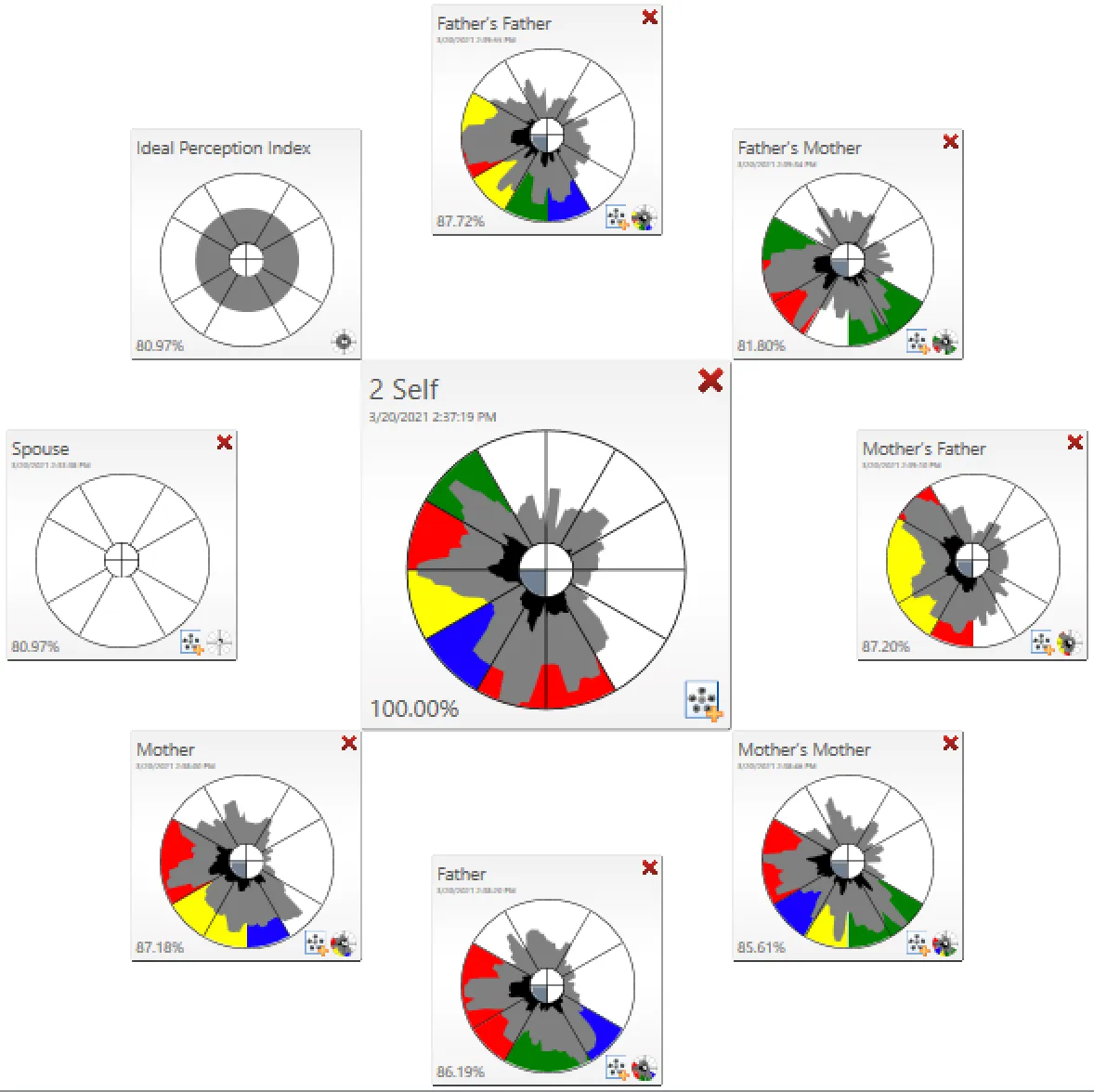Epigenetics is the response of the DNA expression to the energetic information field environment of the cell.
Epigenetics
Epigenetics is the response of the DNA expression to the energetic information field environment of the cell.
The power of the epigentic information field over genetic expression is well illustrated by a published study of a pair of identical twins. The sisters inherited the genetics of Retinitis Pigmentosa which is considered 100% heritable. As usual with the condition, both sisters had normal vision as children, showing that health vision genes also coexist in the cells. On maturation, the condition expresses phenotypically as progressive loss of night vision and then daytime vision leading to total blindness. In this case, one of the sisters never lost her normal vision, despite having the identical disease genes.

We see healing with improvement in structure and function in genetic conditions with Accelerated Self Healing™, which includes an array of therapy modalities that correct and harmonize the epigenetic information field. Our central purpose is to continually re-establish as state of Biofield Coherence™.
We encourage everyone to complete a once-in-a-lifetime process of Transgenerational Perception Reframing. This process clears the inherited epigenetic patterns of disease that run in the family. The EVOX (vox is Latin for voice) system works over the internet while we communicate with you by phone during each session. EVOX software identifies the stress frequencies associated with each parent and grandparent. Those frequencies are then communicated in association with a stress-free state of relaxation directly to the cells of the body. This signal is sent by an electromagnetic signal via the Meridians. The new association changes the meaning of the former stress frequency at the cellular level.
In homeopathy for hundreds of years, inherited patterns of susceptibility to disease have been recognized and healed. These epigenetic patterns are known as Miasms. A classic illustration of the power of these information fields was demonstrated by a patient of mine almost 40 years ago when I was beginning to explore the many dimensions of what we now call Accelerated Self Healing™. A mature woman reported that her unusual lifelong symptoms were shared even more strongly by her mother, whom she had not seen nor heard from in over 30 years. When the woman’s symptoms began responding to our natural therapies, she was shocked to get a phone call out of the blue from her estranged mother. Before the daughter shared anything about herself, her mother said, “You know that problem I always had? Well, it has just started going away finally even though I didn’t do anything different to cause it!” I was able to explain to the daughter how the 50% of her DNA that was identical with her mother’s acts as a transmitter/receiver for biocommunication. It works not only locally within the body, but non-locally across space, independent of distance, via worm-hole connections of quantum entanglement. It didn’t matter that her mother lived over 1,000 miles away... This was a perfect example of transgenerational healing!
Another core modality in Accelerated Self Healing for correcting the epigenetic information field is the Infoceuticals from NES in England.
Infoceutical Patterns:
Intracellular responses to chronic and acute stresses are triggered by allowing Calcium ions to enter the cells.
With significant chronicity or severity, this Calcium deposits intracellularly, producing a focal area of stress in the tissue that continues to produce stress responses even after the initial triggers are gone or resolved.
German New Medicine Founder, Ryke Geerd Hamer, MD, discovered the links between focal spherical stress areas in the brain found in MRI studies and patterns of systemic expression of symptoms and disease.
The NES Brain Hologram Infoceuticals supply the healthy epigenetic information signals to help restore balanced function to these areas of the central nervous system.

CCH: Cerebral Cortex Hologram
The cerebral cortex is the conscious part of the brain, including sensory, motor, integrative, and planning functions. There are several types of biological conflicts that involve the cerebral cortex:
Motor Cortex Constellation biological conflict:
A motor conflict expresses symptoms in the skeletal muscles, and can also leave you feeling stuck in life.
Post Sensory Cortex Constellation biological conflict:
A separation conflict can be experienced as a loss of (physical) contact related to the skin's sensation of touch; also, wanting to separate from someone. Short term memory loss functions to suppress consciousness of the separation.
Pre-Motor Sensory Cortex biological conflict:
The tear ducts and nasolacrimal ducts develop embryologically from the ectoderm, and are affected by wanting to be seen, or not wanting to be seen. The tear ducts are affected by the Gullet Mucosa Sensitivity Pattern which reduces cells lining the lacrimal ducts to allow for increased tear flow. This pattern can result in seizures during the active phase, and hyposensitivity in the healing phase. In the healing phase, regrowth of the cells can block the ducts causing swelling of the gland and dry eye syndrome, especially if chronic or recurrent. The right eye is affected by father/child conflict in right-handed cases, and mother/child conflict if left handed. The opposite patterns affect the left eye. If the nasolacrimal ducts are blocked, the eyes are constantly teary. Inflammation extending to the lacrimal sac is dacryocystitis.
The epithelium lining the tear ducts in the eyelids develops from the ectoderm. Separation conflicts affecting this tissue can involve visual separation experienced as losing sight of someone, such as from moving away or death. It can also related to not being allowed to see someone, or not wanting to see someone. It can relate to animals as well as people. The biological response is that of skin reactivity, with hyposensitivity and ulceration of the ducts to increase flow during the active phase and hypersensitivity with regrowth of the lost cells leading to potential blockage of the duct, and epilleptoid crisis in the healing phase. Chronic issues can reduce production of the oil layer of the tears, leading to increased evaporation and dry eye syndrome.
The skin of the eyelids develops from the ectoderm and is the thinnest skin in the body. It is regulated by the sensory cortex of the contralateral hemisphere. The visual separation conflict that affects this skin comes from losing sight of someone while the eyes are closed. This tissue can also be affected by loss of physical contact that is related to touhcthe eyes.
Temporal Lobe Constellation biological conflict:
Territorial conflicts are related to the sex hormones:
The right temporal lobe relates to male territorial conflicts:
The left temporal lobe relates to female territorial conflicts associated with a woman’s “inner space”, including reproduction:
Frontal Constellation biological conflicts affect the thyroid gland:
Fronto-Occipital Constellation biological conflicts affect acute panic, the contralateral thyroid, and the retina and vitreous body of the eye:
“fear in the neck” that cannot be shaken off
CMH: Cerebral Medulla Hologram
Cerebral Medulla Constellation biological conflicts trigger the compulsion to draw attention to self:
Narcissism and megalomania protect against further self-devaluation conflict.
CBH: Cerebellum Hologram
Cerebellum Constellation biological conflicts:
Characteristics include emotionally numb, cold, distant to avoid further exhaustion from feeling; lacking empathy and compassion.
attack conflicts correspond to:
The tear glands of the eyelids develop embryologically from old mesoderm, but are embedded in the skin, so they are regulated by the Cerebellum. These glands include the meibomian glands and glands of Zeis (sebaceous glands that produce the outermost oily layer of the tear film) and the glands of Moll (sweat glands at the base of the eyelashes). Since the skin is the outermost protective tissue layer of the body, these glands respond to attacks against the eye, such as dirt or an insect, as well as a dirty look, evil eye, or reproachful stare. It could also react to the eyelids feeling dirty from a yucky touch or kiss there. The active phase could result in a localized eyelid swelling, while the healing phase can produce a stye (hordeolum) filled with pus with related fungal (in Phase 3 terrain) or bacterial (in Phase 2 terrain) activity. External styes affect the glands of Moll, while internal styes affect the meibomian glands. Chronic or relapsing internal styes become chalazia. Feeling disfigured by the eyelid swelling prolongs the healing phase. Deficiency of the ocular microbiome also prevents removal of the added cells, and the growth gets encapsulated with connective tissue. Right vs left eye relates to mother or father. Right handed: father = right eye, mother = left eye, and the reverse for left handed cases.
nest-worry/argument conflicts correspond to:
BSH: Brain Stem Hologram
This includes the Midbrain at the top of the Brainstem.
Brain Stem Constellation biological conflicts:
morsel conflicts
Visual morsel conflicts from wanting to see something or fear of vision loss can affect the lacrimal gland, choroid, iris, and ciliary body. The right side relates to wanting to see or receive something, while the left side relates to not being able to give, express, or sell something. During the active phase, the lacrimal gland produces more cells and more aqueous tears. When chronic, this produces a swelling (tumor in low energy Phase 1 terrain) of the lacrimal gland. In the healing phase (Phase 3 terrain) fungal or mycobacterial activity breaks down the extra cells in the swollen lacrimal glands, which produce a thick, purulent discharge. This then dries into a yellowish crust at the lid margins. As with other tumors or swellings, healing can initially be accompanied by increased inflammation (dacryocystitis) as the immune system acidifies the tissue in order to dissolve and mobilize toxins and debris. When this healing program is chronic or recurrent, the lacrimal gland ultimately loses secretory capacity resulting in dry eye syndrome (xerophthalmia) or Sjogren's syndrome. (for tear ducts and nasolacrimal ducts, see CCH)
abandonment conflict, existence conflict, refugee conflict
This can affect the kidneys, resulting in bags under the eyes due to fluid retention and the fact that the eyelids have the thinnest skin in the body. This conflict can increase other swellings due to fluid retention.
© Copyclaim 2023
Remedy Match LLC, DBA Healing Oasis
[email protected]
PO Box 126 Hilo, Hawai'i-Kingdom [96721]
+1 (808) 217-9647
[*"The statements herein have not been evaluated by the Food and Drug Administration. This is not intended to diagnose, treat, cure, or prevent any disease."] T.D.C.
